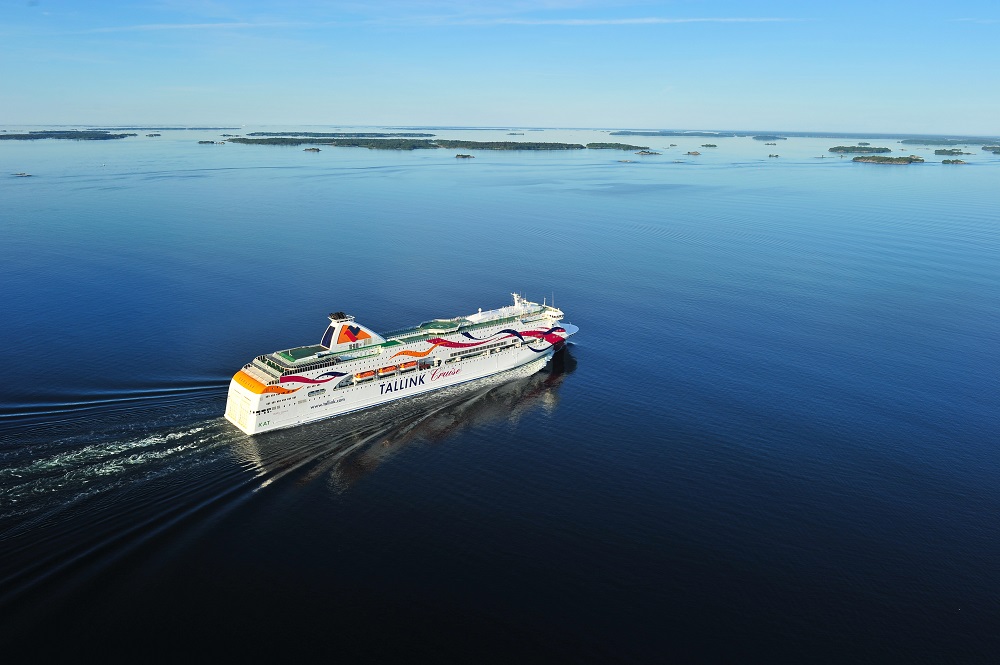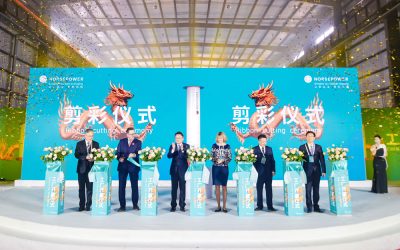Propeller blade renewal intended to cut fuel consumption also has the potential to reduce underwater noise, reports Kari Reinikainen
Efforts of the shipping industry to reduce fuel consumption and thereby pollution to the air may contribute to reduction of noise and vibration as well through the replacement of propeller blades.
Rasmus Lyngdal-Christensen, senior specialist in Acoustics, Noise & Vibrations at FORCETechnology in Denmark says that the main contribution to underwater noise from propellers is cavitation. “Cavitation occurs when the pressure in the water around the propeller drops below the vapour pressure, leading to the formation of bubbles that collapse and generate noise,” he explains.
Designing propellers to minimise cavitation is crucial for reducing underwater noise. This again involves optimising the blade shape and the propeller’s operating conditions to prevent large pressure drops. Propeller blades designed to reduce fuel consumption do not automatically lead to a reduction in underwater noise, as there is an efficiency-noise trade-off.
As an example, blades designed for fuel efficiency may inadvertently increase noise and propeller designers must strike a balance between achieving fuel savings and minimising noise. “However, there may be a correlation because designs that enhance efficiency often do so by improving hydrodynamic performance and reducing cavitation,” Lyngdal-Christensen points out.
Luis Felipe Sánchez Castro, senior naval architect and CFD engineer at Knud E Hansen in Denmark, says that when a ship is designed, considerable effort goes in to ensuring that the entire ship system is optimised for the most common operating conditions, such as speed etc.
“Often it is the case through the life of the vessel that the operating speeds change due to the vessel changing routes, high fuel prices, or regulatory pressures requiring a lower fuel consumption. In these situations, it is common for the design speed to drop from 24knots to 16 for example,” he states.
“This is a large deviation from what the propeller was designed for, and therefore it is often a good idea to revisit or retrofit the design of the propeller to suit the slower speed and often resulting in significant fuel savings.
“In parallel with this process, it is often a good idea to examine the bulbous bow of the vessel. It can be a relatively straight forward process to retrofit a new bulb which is optimised for the new slower speed and reduce the resistance in the order of 7% to 10%.”
Several parameter changes in propeller design can reduce noise
There are several changes that are made during a propeller design that can also have a positive impact on the noise. If the new propeller is designed for the same speed as the original design and the efficiency has improved most likely a number of design parameters will have changed. Firstly, it is very likely that the weight of the propeller has been reduced and its efficiency has been increased. Pressure pulses, which impact underwater radiated noise (URN), are likely to have been reduced.
The shape and airfoil sections of the blade impact the URN i.e. chord distribution, skew angle, thickness. “But let’s suppose that the chord distribution is increased towards the tip, that can help to reduce pressure pulses, depending on the design that can also reduce cavitation and if the propeller is well balanced that can also reduce the weight and therefore have a better efficiency. As cavitation is one of the largest sources of URN, any reduction in cavitation will most likely also result in reduced URN,” Sánchez Castro notes.
Tallink Grupp, the Estonian cruise ferry company, recently replaced the original propeller blades on its 2008-built Baltic Queen with ones optimised for a slower speed and obtained significant reductions in noise levels. To measure these, the company partnered with Tallinn University of Technology (TalTech).
As the 48,000gt ship is the second unit of the class, its original propellers and their blades had been designed four years earlier for Galaxy, the first unit in the class of three sister ships that were built at what is now Rauma Marine Constructions in Finland.
This was done in two stages. First, the underwater noise level produced by the original propeller blades was measured prior to the vessel’s drydocking from 30 August to 4 September 2023. The second set of reading was obtained after the installation of the new propeller blades, from 15 to 25 September 2023.
The measuring results showed that 40Hz decidecade source level with the new propeller blades, moving at the speed of 17.6knots, is by 16± 5dB lower and that broadband source level in decidecades from 20Hz to 20,000Hz with the new propeller blades, moving at the speed of 17.6knots, is lower by 8± 5dB.
Commenting on the results, Aleksander Klauson, Professor of Structural and Fluid Mechanics at the Institute of Civil Engineering and Architecture at TalTech, states: “The measurements demonstrated that by optimising the ship’s propeller, it is possible to mitigate cavitation and significantly reduce the underwater noise caused by the passenger ship.”
Cavitation noise can travel 100 miles under water
International Institute of Marine Surveying says that propeller cavitation can generate as much as 180dB of underwater radiated noise and this can be heard by marine life 100 miles away. Dr Stephen Simpson, Associate Professor in Marine Biology & Global Climate Change, University of Exeter, a leader in marine noise pollution research, says: “Noise levels in the ocean due to maritime activity has been rising for decades, from a growing number of sources, including shipping, motorboats, oil prospecting, offshore energy installations and military activity.”
In October of last year, the IMO’s revised guidelines for the reduction of underwater radiated noise from ships took effect. About propellers, these note that propellers should be designed and selected to minimise cavitation while considering and optimising effects on energy efficiency.
“Cavitation can be the dominant URN source and may increase underwater radiated noise significantly. At typical operating speeds, cavitation can be reduced under normal operating conditions through good design, such as optimising propeller load, ensuring uniform water flow through propellers (influenced by hull design), and careful selection of the propeller characteristics such as diameter, blade number, blade area, pitch, skew, rake and sections,” according to IMO.
Interaction between the hull and propeller can be analysed to optimise the design of the propeller, hull, rudder and ship performance concurrently. While noise-reducing propeller design options are available for many applications and while these should be considered, IMO states it is also acknowledged that the optimal propeller with regard to URN reduction cannot always be employed due to technical or geometrical constraints.
Ice-strengthening of the propeller and mass pose such constraints, and it is also acknowledged that some design principles for cavitation reduction can cause a decrease in efficiency. “Some new state-of-the-art propeller design and concepts have been developed, including high-skewed propellers, forward-skew propellers and contra-rotating propellers,” IMO notes.







